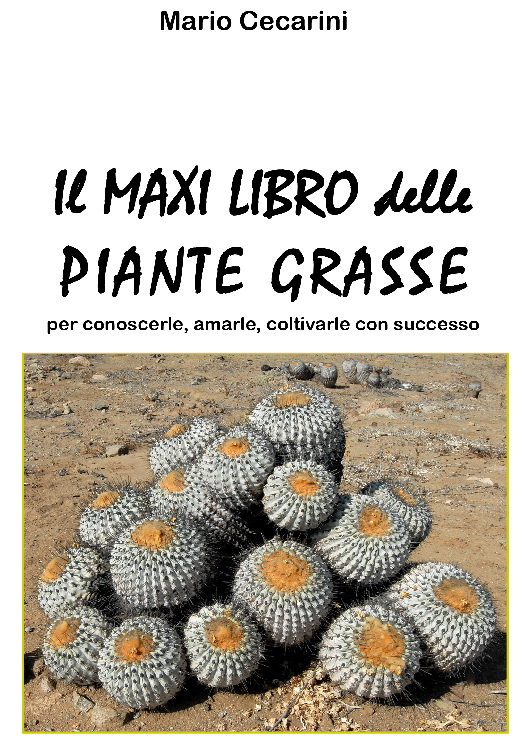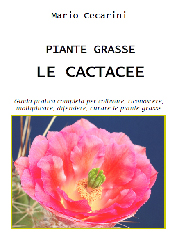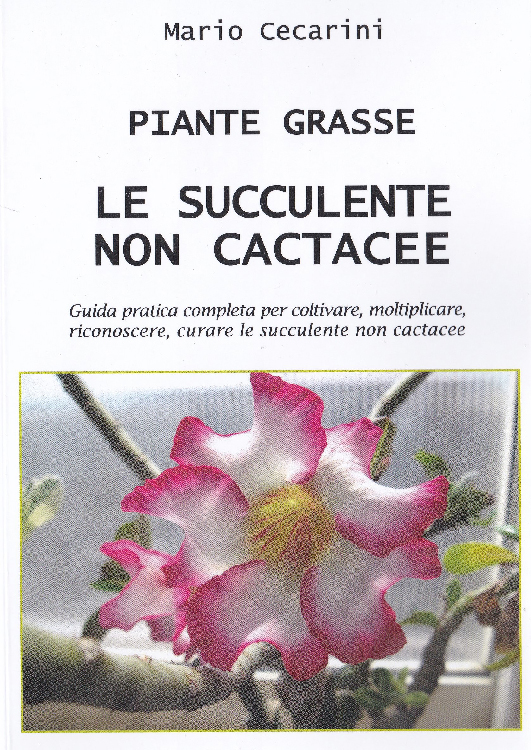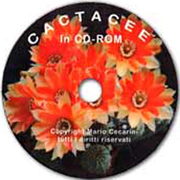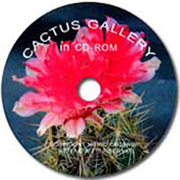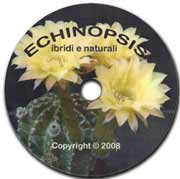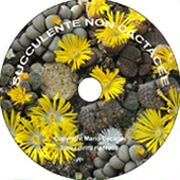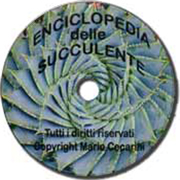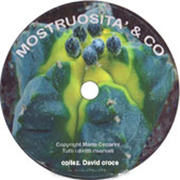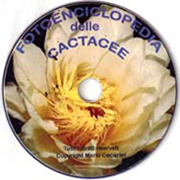c periodo di crescita f periodo di crescita e fioritura periodo di stasi
|
Generi
|
gen
|
feb
|
mar
|
apr
|
mag
|
giu
|
lug
|
ago
|
set
|
ott
|
nov
|
dic
|
|
Acrodon
|
f
|
c
|
c
|
c
|
c
|
c
|
c
|
|||||
|
Aloinopsis
|
f
|
f
|
c
|
c
|
c
|
c
|
||||||
|
Antegibbaeum |
c
|
c
|
c
|
f |
f
|
c
|
||||||
|
Aptenia
|
c
|
c
|
f
|
f
|
f
|
c
|
||||||
|
Argyroderma
|
c
|
c
|
f
|
f
|
f
|
c
|
|
|||||
|
Aridaria
|
c
|
f
|
f
|
f
|
||||||||
|
Astridia
|
f
|
f
|
c
|
c
|
c
|
c
|
||||||
|
Bergeranthus
|
c
|
c
|
f
|
f
|
c
|
c
|
c
|
|||||
|
Biljia
|
c | c | c | c | c |
f
|
f
|
|||||
|
Braunsia
|
c | c |
f
|
f
|
c | c | c | |||||
| Carpobrotus | c | c | c |
f
|
f
|
c | c | |||||
|
Carruanthus
|
c | c | c | c | c |
f
|
f
|
|||||
|
Cephalophyllum
|
c |
f
|
f
|
c
|
c | c | c | |||||
|
Cerochlamys
|
f
|
c | c | c | c |
f
|
||||||
|
Chasmatophyllum
|
c | c |
f
|
f
|
||||||||
|
Cheirodopsis 1)
|
|
|
c |
f
|
f
|
c | c | c | c | |||
|
Conophytum
(foglia lunga) |
c | c |
c
|
c
|
f
|
f
|
c
|
|||||
|
Conophytum
(foglia tonda) |
c | c |
c
|
c
|
f
|
f
|
c
|
|||||
| Corpuscolaria | c | c |
f
|
f
|
c | c | ||||||
|
Cylindrophyllum
|
c | c | c | c | c | c |
f
|
c | ||||
|
Dactylopsis 2)
|
c | c | c | c |
f
|
c | ||||||
|
Delosperma 1)
|
c | c | c |
f
|
f
|
f
|
c | |||||
|
Didymaotus
|
c |
f
|
c | c | c | |||||||
|
Dinteranthus
|
c | c | c |
f
|
f
|
c
|
c | |||||
|
Diplosoma
|
f
|
f
|
c | c |
f
|
|||||||
|
Dracophilus
|
c | c | c |
f
|
f
|
c | ||||||
|
Drosanthemum
|
c |
f
|
f
|
f
|
f
|
c | ||||||
|
Ebracteola
|
c | c |
f
|
f
|
f
|
c | ||||||
|
Erepsia
|
c |
f
|
f
|
f
|
f
|
c | ||||||
|
Faucaria
|
c | c | c |
f
|
f
|
f
|
f
|
c | ||||
|
Fenestraria
|
c | c | c | c | c |
f
|
f
|
c | ||||
|
Frithia
|
c | c |
f
|
f
|
c
|
c | ||||||
|
Gibbaeum
(album, dispar) 3) |
c | c |
f
|
f
|
c
|
c
|
||||||
|
Glottiphyllum
|
c | c | c |
f
|
f
|
f
|
c
|
|||||
|
Hereroa
|
c |
f
|
f
|
f
|
f
|
f
|
f
|
|||||
|
Herreanthus
|
c | c | c | c |
f
|
f
|
c | |||||
|
Jacobsenia
|
f
|
f
|
c | c | c | c | c | |||||
|
Jensenobotrya
|
c | c |
f
|
f
|
f
|
c | ||||||
|
Juttadinteria
|
c | c | c | c |
f
|
f
|
f
|
|||||
|
Khadia
|
f
|
c | c |
f
|
f
|
f
|
||||||
|
Lampranthus
|
c | c |
f
|
f
|
f
|
f
|
c
|
|||||
|
Lapidaria
|
c | c | c |
f
|
f
|
f
|
c | |||||
|
Leipoldtia
|
c |
f
|
f
|
f
|
f
|
c | ||||||
|
Lithops
|
c | c | c |
f
|
|
f
|
f
|
|
||||
|
Machairophyllum
|
c | c | c |
f
|
f
|
c | c | |||||
|
Malephora
|
c | c | c |
f
|
f
|
c | ||||||
|
Mesembryanthemum
|
c | c | c | c |
f
|
f
|
||||||
|
Mestoklema
|
c | c |
f
|
f
|
f
|
c | ||||||
|
Meyerophytum
|
c | c |
f
|
f
|
c | |||||||
|
Mitrophyllum
|
c |
f
|
c | |||||||||
|
Monilaria
|
f
|
c | c | c | c | c |
f
|
|||||
|
Muiria
|
c |
f
|
c | c | c | c | ||||||
|
Namibia
|
c | c | c | c |
f
|
f
|
||||||
|
Nananthus 1)
|
f
|
f
|
c | c | c |
f
|
||||||
|
Nelia
|
c | c | c |
f
|
f
|
|||||||
|
Neohenricia
|
c | c |
f
|
f
|
c | |||||||
|
Odontophorus
|
f
|
f
|
f
|
c | c | c | ||||||
|
Oophytum
|
c | c |
f
|
c | c | c | c | c | ||||
|
Opthalmophyllum
|
c | c | c | c | c |
f
|
f
|
c | ||||
|
Orthopterum
|
c | c | c |
f
|
f
|
f
|
f
|
|||||
|
Oscularia
|
c
|
f
|
f
|
c | c | c | ||||||
|
Ottosonderia
|
c | c | c | c |
f
|
f
|
f
|
|||||
|
Pleiospilos 4)
|
c | c | c | c |
f
|
f
|
f
|
c | ||||
|
Psammophora
|
c | c | c | c |
f
|
f
|
||||||
|
Rabiea
|
c | c | c | c |
f
|
f
|
f
|
c | ||||
|
Rhinephyllum
|
c | c | c |
f
|
f
|
|||||||
|
Rhombophyllum
|
f
|
f
|
f
|
f
|
c | c | ||||||
|
Ruschia
|
c | c |
f
|
f
|
f
|
|
||||||
|
Ruschianthus
|
c |
f
|
f
|
c | c | |||||||
|
Sceletium 1)
|
f
|
c | c | c | c |
f
|
||||||
|
Schlechteranthus
|
c | c | c |
f
|
f
|
f
|
||||||
|
Schwantesia
|
c | c | c | c |
f
|
f
|
||||||
|
Stoeberia
|
c | c | c |
f
|
f
|
f
|
||||||
|
Stomatium
|
c | c | c |
f
|
f
|
f
|
||||||
|
Titanopsis
|
c | c | c | c |
f
|
f
|
c
|
|||||
|
Trichodiadema
|
|
c
|
f
|
f
|
f
|
f
|
f
|
f
|
c | c | ||
|
Vanheerdea
|
f
|
c | c | c | ||||||||
|
Vanzijlia
|
c | c | c |
f
|
f
|
1) Alcune specie potrebbero andare in riposo in periodo diverso.
2) Alcune specie hanno accrescimento estivo, altre invernale: osservare quando l'apice inizia a vegetare.
3) Il periodo di accrescimento varia da specie a specie.
4) Alcune specie fioriscono in primavera.
N.B. Tenere presente che essendo le piante originarie dell'emisfero meridionale, se coltivate nell'emisfero nord alcune specie si adattano alla crescita nella buona stagione, mentre altre mantengono le caratteristiche originarie per cui vegetano durante il nostro inverno con intuibili difficoltà di coltivazione. Fondamentale a questo scopo risultano le conoscenze sulla temperatura, piovosità, e umidità in natura e l'osservazione dell'epoca in cui l'apice entra in attività presso di noi.
Pertanto, in considerazione delle condizioni offerte da ciascun coltivatore, occorre ritenere i periodi riportati in tabella come indicativi.
|
Città |
Windhoek
mt 1600 |
Johannesburg
mt 1800 |
Città del Capo
mt 10 |
| Mese più umido | febbraio 52% | febbraio 75% | giugno 80% |
| Mese più secco | settembre 25% | agosto 40% | gennaio 65% |








